Galion, Ohio
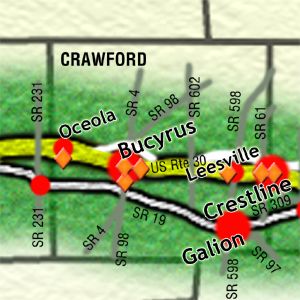
Galion (On the highway 1914-1920) Population: 11,300
Galion was founded in 1831 at the crossroads of the Portland Road and an east-west army road. The town began as a farm-to-market town but boomed with the railroads and was chosen for the Lincoln Highway because of good existing roads. From 1913 through 1920 the LH ran through Main St., but lost out when the Association chose the northern straighter route through Leesville. (Then-Senator Warren Harding stumped for the re-routing of 70 miles through Galion, Marion and Lima; but this part later was designated as the Harding Highway.)
The Central Hotel on Public Square has been fully renovated. Stroll the "Uptowne" to see its recently restored Italianate buildings and unique specialty shops.
Notable were buggy, farm machinery and road related manufacturing (remember those yellow GALION graders?) and the invention of the telephone's dial tone occurred in Galion.
 Brownella Cottage, a restored Victorian mansion (1887) of Bishop William M. Brown, turn-of-the-century national political and religious leader, complete with original furnishings. Sundays from June-Oct, Tours: 1:30pm, 2:15 and 3:00pm. One block west and south of Public Square. (419) 468-9338.
Brownella Cottage, a restored Victorian mansion (1887) of Bishop William M. Brown, turn-of-the-century national political and religious leader, complete with original furnishings. Sundays from June-Oct, Tours: 1:30pm, 2:15 and 3:00pm. One block west and south of Public Square. (419) 468-9338.-
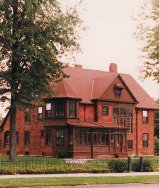
Brownella Cottage
 the Galion Historical Society which owns and operates Brownella Cottage.
the Galion Historical Society which owns and operates Brownella Cottage. The Galion Theatre is a rare restored 1940s neon marquee theater, now operated by the Galion Community Theater, Inc., a performing local theater organization which gives shows regularly.
The Galion Theatre is a rare restored 1940s neon marquee theater, now operated by the Galion Community Theater, Inc., a performing local theater organization which gives shows regularly.-
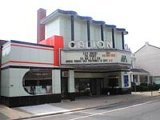
Galion Theatre
 Public Library, built in 1904 with funds from Andrew Carnegie
Public Library, built in 1904 with funds from Andrew Carnegie-
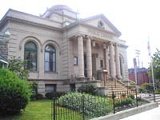
Andrew Carnegie Public Library
 The 1900 “Big Four Depot." Thirty-two passenger trains once came through Galion on an average day in the 20s.
The 1900 “Big Four Depot." Thirty-two passenger trains once came through Galion on an average day in the 20s.-
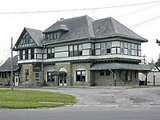
Big Four Depot
- For more community information, visit the Galion Area Chamber of Commerce

Galion Roller
They told the Presidents "No."
Every state and town wanted on the Lincoln Highway, but the Lincoln Highway Association was committed to making the route as direct as possible from New York to San Francisco. When the route was announced to the nation on September 14, 1913, many locations not on the route campaigned hard to change the decision. Los Angles argued that they should be the western terminus and not San Francisco. Akron and Cleveland argued that the route should not go through Canton, but their towns instead. Kentucky, where Lincoln was born and Springfield, Illinois where he was raised, sought inclusion on sentimental grounds. There was bickering in Wyoming that was only to be settled by a formal declaration by Governor Carey.
The communities of Baltimore, Washington D.C., Fredrick and Wilmington pressured their Senators and Representatives to find a way to include them even if it did add 172 miles to the route. Eventually, President Wilson was recruited, and in June of 1914, he wrote the Lincoln Highway Association requesting such a change. This request was denied.
Two weeks after the route was announced as running from Mansfield to Lima by way of Marion, the Association made a revision eliminating Marion because a shorter route existed from Mansfield and Galion to Lima. A committee consisting of Marion citizens traveled to Detroit to meet with the Association to plead for reconsideration. The Association said "no" to the group which included then Senator Warren G. Harding, the man who replaced President Wilson, who was told "no" to the inclusion of Baltimore and Washington D.C.
The pre 1920 route of the Lincoln Highway entered Crawford County on what is now S. R. 309 into Galion, leaving town on S. R. 19 to Bucyrus. Follow this set of instructions to continue westward to Wyandot County.


